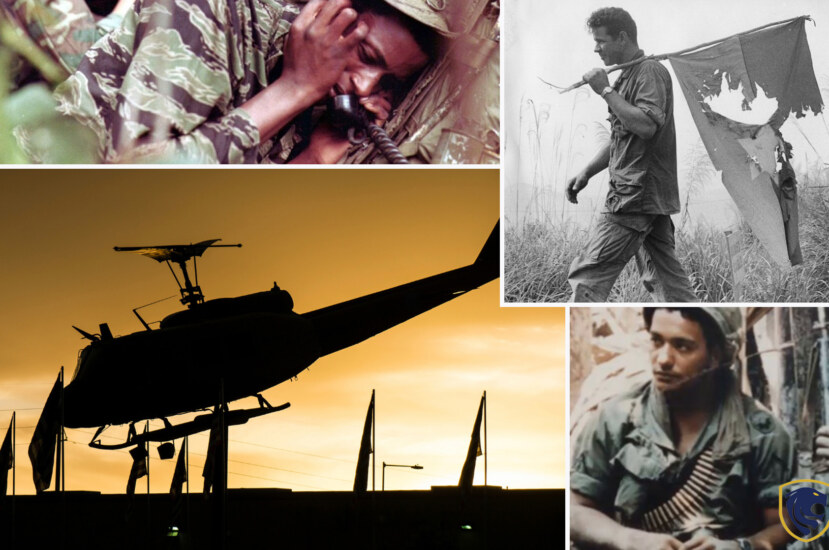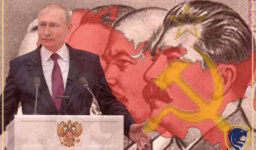Vietnam is a Southeastern country located on the eastern edge of the Indochinese peninsula. Vietnam is a socialist republic country ruled by a communist party. In order to establish the communist state, Vietnam had to go through a decades long war with America. The Vietnam war started on 1st of November, 1955 and ended on 30th April, 1975. Vietnam war was a brutal and bloodstained war. The casualties of the Vietnam war included death of 2 million Vietnamese civilians, more than a million of North Vietnamese troops, uncountable civilians in South, 58,220 US troops.
The Vietnam war is quite famous due to the fact that the United States, the most powerful country in the world had to withdraw its troops, conceding its defeat at the end. Yet most of the people are oblivious to the historical and hidden facts relating to the Vietnam war.
The division of Southern Vietnam and Northern Vietnam
When the French created ‘French Indochina’ in 1877, Vietnam, Cambodia, Cochin China came under French rule. Japan got the control of Vietnam during the world war II. While France and Japan were at war, Ho Chi Minh, a revolutionary leader created ‘the League for the Independence’, better known as ‘Viet Minh’ to fight for their independence in May,1941. On 2nd September, 1945 with Japan’s surrender in World War II, Ho Chi Minh proclaimed the independence of Vietnam from France. When France rebuked the move, the Viet Minh started a guerilla warfare. French rule in Vietnam ended with its defeat at Battle of Dien Bien Phu.

The division of Southern Vietnam and Northern Vietnam
After the independence, Vietnam was split as North Vietnam and South Vietnam as per the Geneva accords signed in July 1954. Further, north Vietnam came under Ho Chi Minh’s communist party and South Vietnam was ruled by emperor Bao Dai. The north was supported by the Soviets and China while French involved in South with the support of other allies. Moreover, the superpowers watched the unfolding events in Vietnam with a sense of apprehension.
Fear of Spread of Communism
Vietnam was to be unified after an election in two years’ time. The USA made certain the cancellation of elections, being anxious that Vietnam would end up as a communist government.
China became a communist nation in 1949 followed by North Korea. The Unite States believed if Vietnam turned into Communism, Thailand, Malaysia, Indonesia and other Asian countries would follow the suit. So, the United States was determined to end the spread of communism.

Fear of Spread of Communism
Turmoil in South Vietnam
The majority of Vietnamese is Buddhists. Yet the government administration was largely comprised of Catholics which led to chaos. As the president, Diem too was a Catholic, Vietnamese were under the impression that foreigners ruled the country in the guise of government. To their dismay government supported the large landowners disregarding the local peasants. Number of large land owners followed Catholicism. Also, the corruption was rampant among government officers at the time. Therefore, the government of Diem was very unpopular.

Turmoil in South Vietnam
Military-led regime in South Vietnam
Due to government’s unpopularity and incompetence in fighting Viet Cong guerillas which was an armed organization in South Vietnam, the USA wanted a more suitable person as the president. So, the CIA of USA negotiated with South Vietnamese generals in 1963. On 2nd November the military apprehended and executed President Diem and his brother Nhu which they did without informing the USA. Anyhow, the USA was content believing that the military led government would soon defeat Viet Cong and ensure the victory of South Vietnam. In contrary, South Vietnam was viewed as a pawn of America. It resulted in locals’ support for Vietnam’s unification of North and South under a communist government.
The Start of America’s involvement
On 2nd August 1964, North Vietnam attacked a US spy ship. The incident ended up with the USA’s involvement in Vietnam war. Along with the USA five other countries allied to wage war against North Vietnam and Viet Cong guerillas. They were Australia, New Zealand, South Korea, Thailand, and the Philippines. The USA began the war with a bombing campaign. This bombing campaign was bigger than the air campaign in world war II. 7 million tons of bombs, missiles and rockets were dropped during the Vietnam War. But only total of 2.1 million of explosives were dropped during the course of World War II.
The My Lai Massacre

The My Lai Massacre
USA troops’ pogrom of more than 400 civilians in 1968, suspecting them to be Viet Cong sympathizers in My Lai area is known as the My Lai Massacre. Even children as young as 12 were killed. Moreover, women were gang raped before put them to death. The journalists uncovered the massacre in November 1969. However, there were three military troops who didn’t participate and opposed the massacre. Although they were condemned by the government and the fellow troops at the beginning, later they were officially recognized for their actions in 1999.
America’s use of Agent Orange
The USA used a chemical that removed the leaves from trees and plants, so that guerillas would not have places to camouflage. Agent Orange made over 31,000 square kilometers of forest cleared. Both civilians and USA soldiers faced the bad effects of the chemical like high risks of developing cancer and birth defects. It is said that bad effects of the chemicals are lingering on to present date.

America’s use of Agent Orange
War crimes by North Vietnam and Viet Cong
Almost 80,000 civilians were killed in Viet Cong guerillas’ terror tactics as only 20% of casualties were suffered by the Allies, and the remaining 80% of casualties were inflicted on civilians. They put bombs on refugee camps resulting in 300,000 casualties on civilians. Another war crime of north Vietnam was torturing captured Allied soldiers.

War crimes by North Vietnam and Viet Cong
Tet Offensive
In 1968 North Vietnam and the Viet Cong carried out attacks across 100 cities covering military bases and government buildings, including the United States embassy in Saigon. Also, they were able to capture the soldiers of allies. But within weeks the allies retook most of fallen cities. So, North Vietnam considered the Tet offensive a defeat, yet it turned out to be a political victory, as the lies about the war were exposed and the USA government lost people’s support in war.

Tet Offensive
Limited Media Coverage
The USA persuaded media to release only the stories of success on the battlefield. Eventually people stopped believing media reports. They didn’t believe the stories of victories. It ended up impairing the trust of people in the USA government and their intervention in Vietnam.

Limited Media Coverage
Impact of losing public support
Anti-war sentiments were developing among American public with the rise of death of soldiers. The loss of public support directly impacted the United State’s military. The soldiers too were reluctant to fight the war. It was hard to find people to replace soldiers who died at war. The news of war crimes such as My Lai Massacre dissuaded people more from supporting the Vietnam war.

Impact of losing public support
Withdrawal of Allies in 1970
From 1970s it was South Vietnamese who fought in frontline, as the USA decided to involve only by providing support to the allies. Concurrent to the Vietnam war, all involved nations engaged in discussions, which led to withdrawal of countries like Australia from the Vietnam war.

Withdrawal of Allies in 1970
The Victory of North Vietnam
With the stoppage of bombing campaign North Vietnam revived their campaign with modernization and expansion of their military infrastructure. It helped them to claim a series of victories after 1973.
In the campaign they started in dry season in 1973, they were able to retake all the territories they lost in 1972. In 1974 they received crucial information needed for the victory.

The Victory of North Vietnam
After the decisive victory of Phuoc Long Province by North Vietnam, South Vietnam asked for aid from the USA. But the request was turned down as Congress denied aid despite the president Gerald Ford’s attempts.
Finally, in March,1975 North Vietnamese forces reached Saigon which was the capital of South Vietnam.
Evacuation of citizens and the troops by the USA
Americans took steps to evacuate their troops and civilians using helicopters. The city was with full of commotion as South Vietnamese strived to escape. Also, the USA evacuated groups that were openly supportive of the regime and who had strong connection with the regime.

Evacuation of citizens and the troops by the USA
South Vietnam government escaped to Taiwan on 25th April. At last Saigon fell on 30th April.
Vietnam Syndrome
After the Vietnam war, Americans developed the notion that the USA should not involve in other countries’ matters unless, the USA is facing a direct threat. This perception is called Vietnam Syndrome.

Vietnam Syndrome
Impact of Vietnam War on USA military
Vietnam war broke the notion that the USA military was invincible. Also, the USA military became an all-volunteer force at the face of anti-war movements. The returning soldiers were labelled murderers by war critics for their involvement in killing civilians. Moreover, some considered they humiliated the country losing the Vietnam war. Some other showed sympathy on the injured. However, the USA honored the ones who served the country and their sacrifices were immortalized by introducing Memorial Day.

Impact of Vietnam War on USA military


